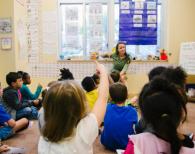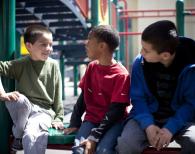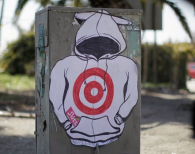Storytelling helps to protect our integrity, validate our existence, and create empathy.
By Jonathan Santos
In my eighth grade English class, everyone kept a journal—even our teacher Mrs. Griffin. Every day, she allotted 10 minutes for her students to write. She always told us, “write to express, not to impress.” There were no prompts. No boundaries. The only rule was to write for the entire 10 minutes without stopping. You stop, you fail. Endure the hand cramps and the writer’s block. Just keep moving your pencil.
At the end of each writing session, we would share what we had written but only if we wanted to. Some entries were funny. Some were ridden with hurt. But they were always raw, honest, and uninhibited. We never gave feedback to what others had written. We didn’t have to. We honored each other’s stories by simply listening. We expressed solidarity through silence.
We learned the art of storytelling is not just for playwrights, novelists, and screenwriters. All of our stories are important and worth sharing. In Mrs. Griffin's class, a mutual respect for each other’s stories translated to a collective respect for learning. We excelled because we supported one another.
identity safety

The final domain of identity safety is caring classroom environments, where social skills are taught and practiced to help students care for one another in the context of an emotionally and physically safe classroom.

Positive classroom relationships are the foundation of an identity safe classroom. You cannot create a sense of identity safety without a continuous focus on how the students are feeling and treating one another. Positive classroom relationships are based on trusting, positive interactions with the teacher and among the students.

Many teachers believe that the best way to live Dr. Martin Luther King’s dream is to be colorblind, to ignore the differences among children. And yet, Dr. King did not really intend to make differences disappear. When teachers ignore differences in an attempt to be colorblind, classrooms are not identity safe. Students from negatively stereotyped groups can feel stereotype threat—a sense of not belonging, or not being seen as capable. These students may worry that they will be judged or treated according to a negative stereotype, or that they might do something to inadvertently confirm it.

Child-centered teaching prioritizes the students’ perspectives in all classroom activities and interactions. We met one teacher who used a literal change of perspective to get in a child-centered frame of mind: Each morning before the kids came in, she would sit in the chair of a different student and look around the classroom, imagining what would it feel like to be that student.

The goal of most American teachers is to successfully educate all students, but too many black and Latino students underperform academically and fail to meet their potential. Educating all students well is not only important for the students themselves, but for our nation as a whole. We cannot have a just and democratic society without fully educated citizens.

When you hear the words identity safety, you might immediately think it has something to do with “identity theft.” Identity theft refers to when someone steals your name and financial identity, so you can no longer use your credit cards or fully function as yourself. How would it affect you psychologically to have your identity stolen? Uncertain, defensive, afraid to trust?
Identity safe classrooms are those in which teachers strive to ensure students that their social identities are an asset rather than a barrier to success in the classroom. Acknowledging students’ identities, rather than trying to be colorblind, can build the foundation for strong positive relationships.

“Young black men know that in far too many settings they will be seen not as individuals, but as the ‘other,’ and given no benefit of the doubt. . . . Society’s message to black boys — ‘We fear you and view you as dangerous” — is constantly reinforced. . . . Even those who keep their distance from this deadly idea are at risk of losing their lives to it. The death of Trayvon Martin vividly underscores that danger.”
—Brent Staples, New York Times
Street art in reaction to the killing of Trayvon Martin. Source: New York Times

